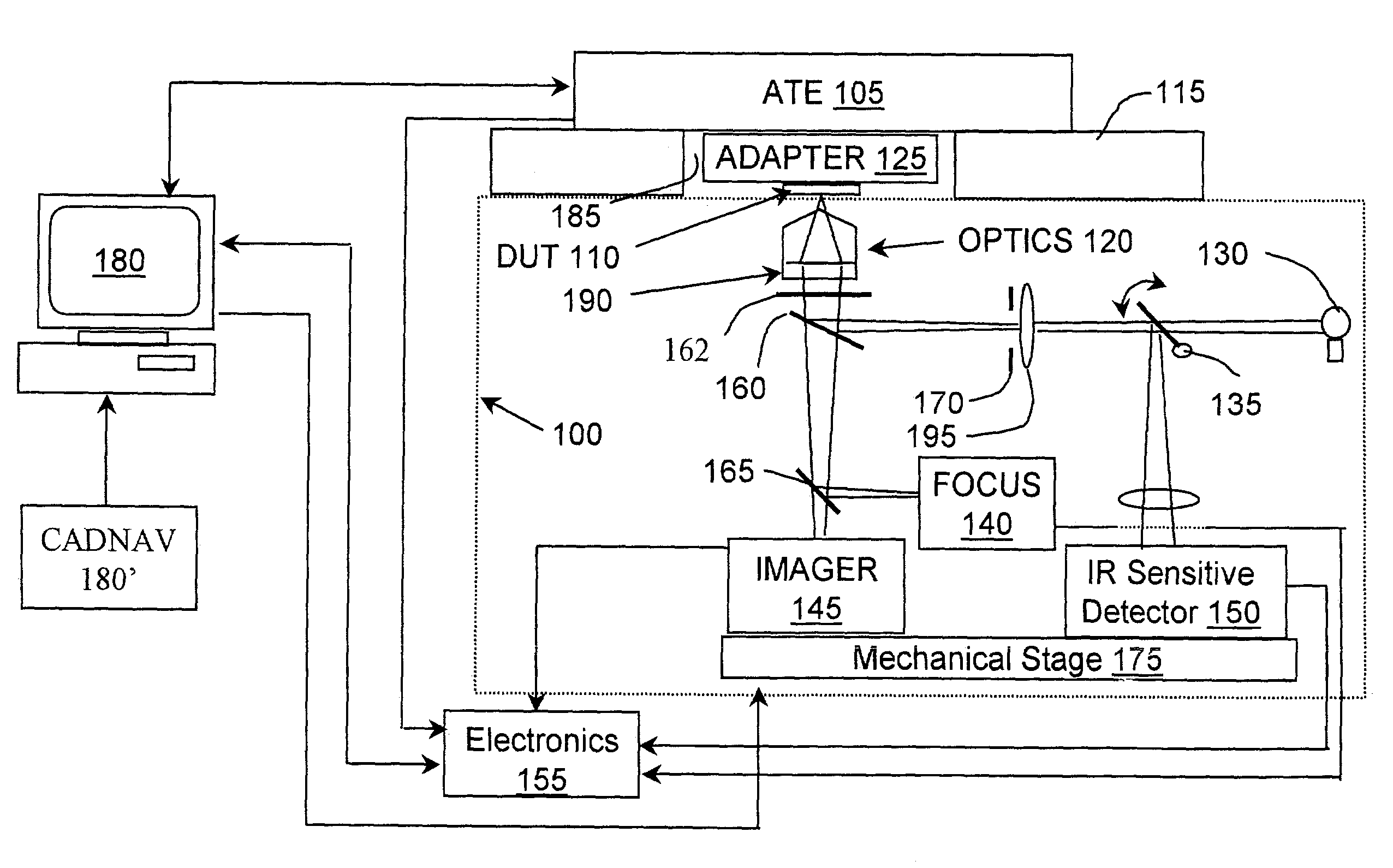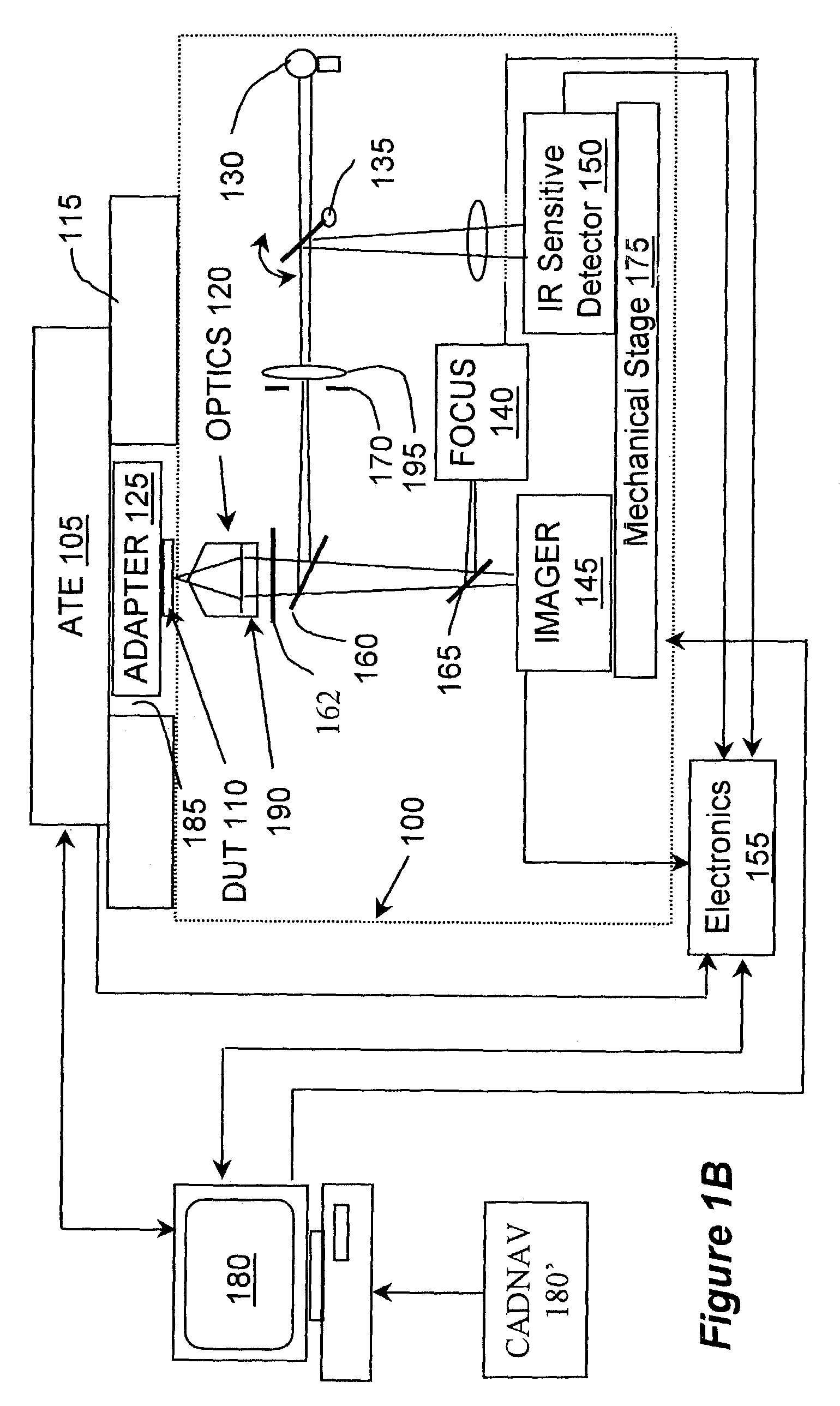Time resolved non-invasive diagnostics system
a diagnostic system and time resolution technology, applied in the field of time resolution non-invasive diagnostic systems, can solve the problems of multiple levels of metal interconnects, time-consuming and destructive methods, and inability to locate failures of semiconductor devices, so as to improve light collection efficiency and imaging resolution, and enhance system stability.
- Summary
- Abstract
- Description
- Claims
- Application Information
AI Technical Summary
Benefits of technology
Problems solved by technology
Method used
Image
Examples
Embodiment Construction
[0048]The present invention provides a testing system particularly suitable for rise time, timing; logic fault localization and other testing of microchips, especially from the backside through the substrate (e.g., flip chip packaged devices). Accordingly, the description proceeds with examples using flip chip. However, it should be appreciated that the invention is not limited to testing flip chips. For example, it is possible to take top-side packaged devices and “flip” them in a chip-scale package (CSP), or design the proper opening to ensure the emitted light gets through the top-side. What is desired is to be able to collect emission from a device of interest in the chip.
[0049]FIGS. 1A and 1B are general schematics depicting the major components of the testing and debug system according to an exemplary embodiment of the invention. The system operates in conjunction with a commercially available automated testing equipment 105 (ATE). The ATE generally comprises a controller, suc...
PUM
 Login to View More
Login to View More Abstract
Description
Claims
Application Information
 Login to View More
Login to View More - R&D
- Intellectual Property
- Life Sciences
- Materials
- Tech Scout
- Unparalleled Data Quality
- Higher Quality Content
- 60% Fewer Hallucinations
Browse by: Latest US Patents, China's latest patents, Technical Efficacy Thesaurus, Application Domain, Technology Topic, Popular Technical Reports.
© 2025 PatSnap. All rights reserved.Legal|Privacy policy|Modern Slavery Act Transparency Statement|Sitemap|About US| Contact US: help@patsnap.com



